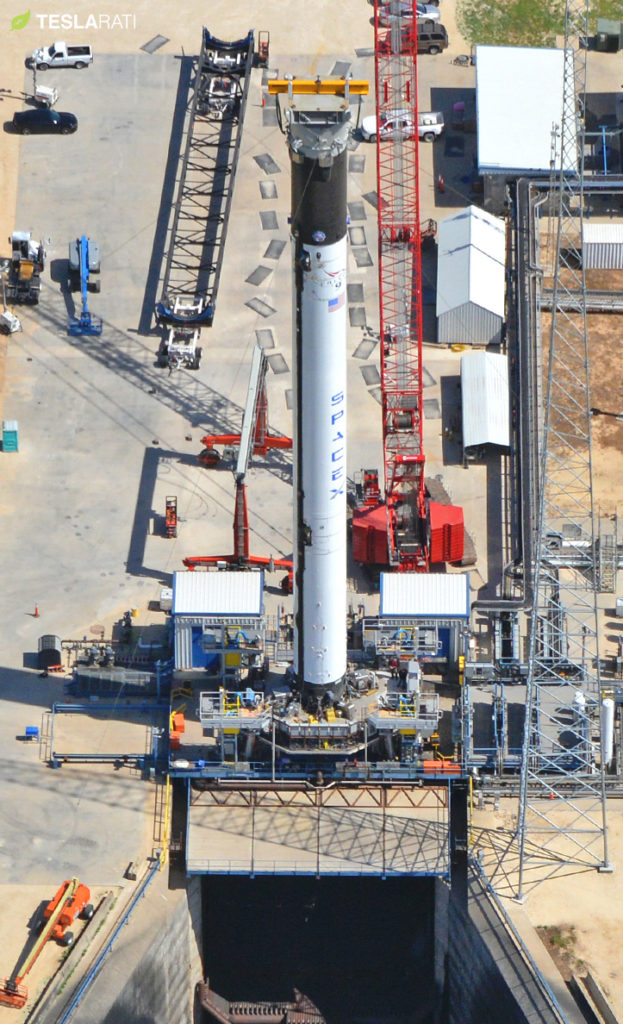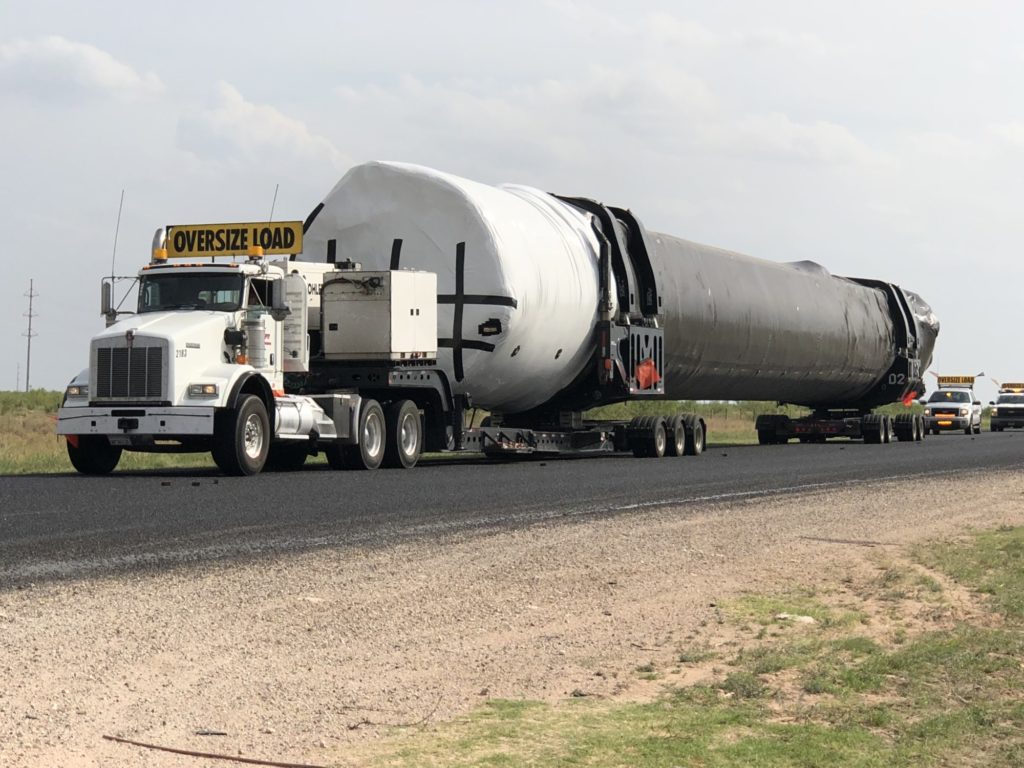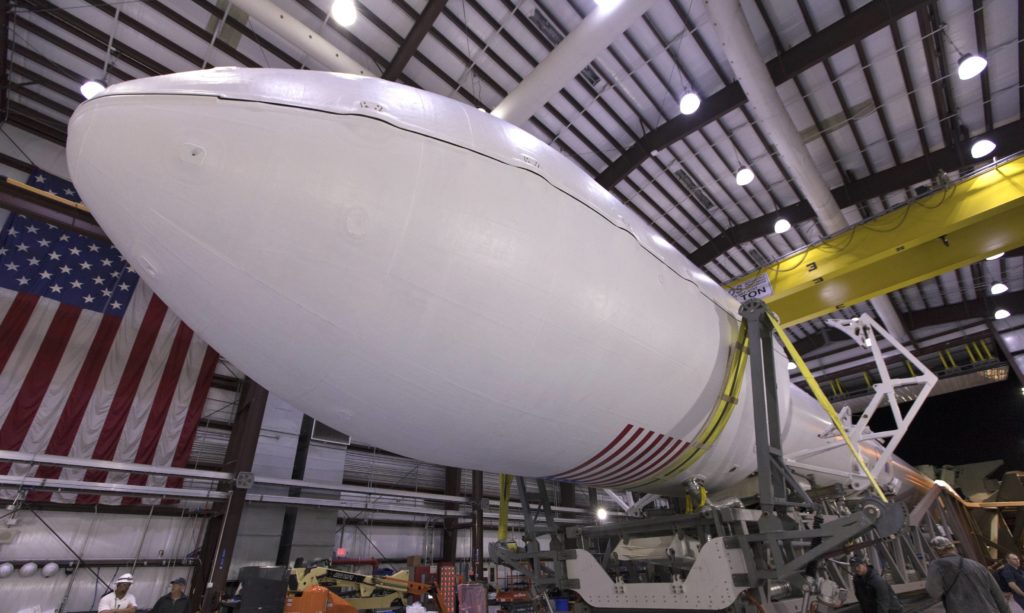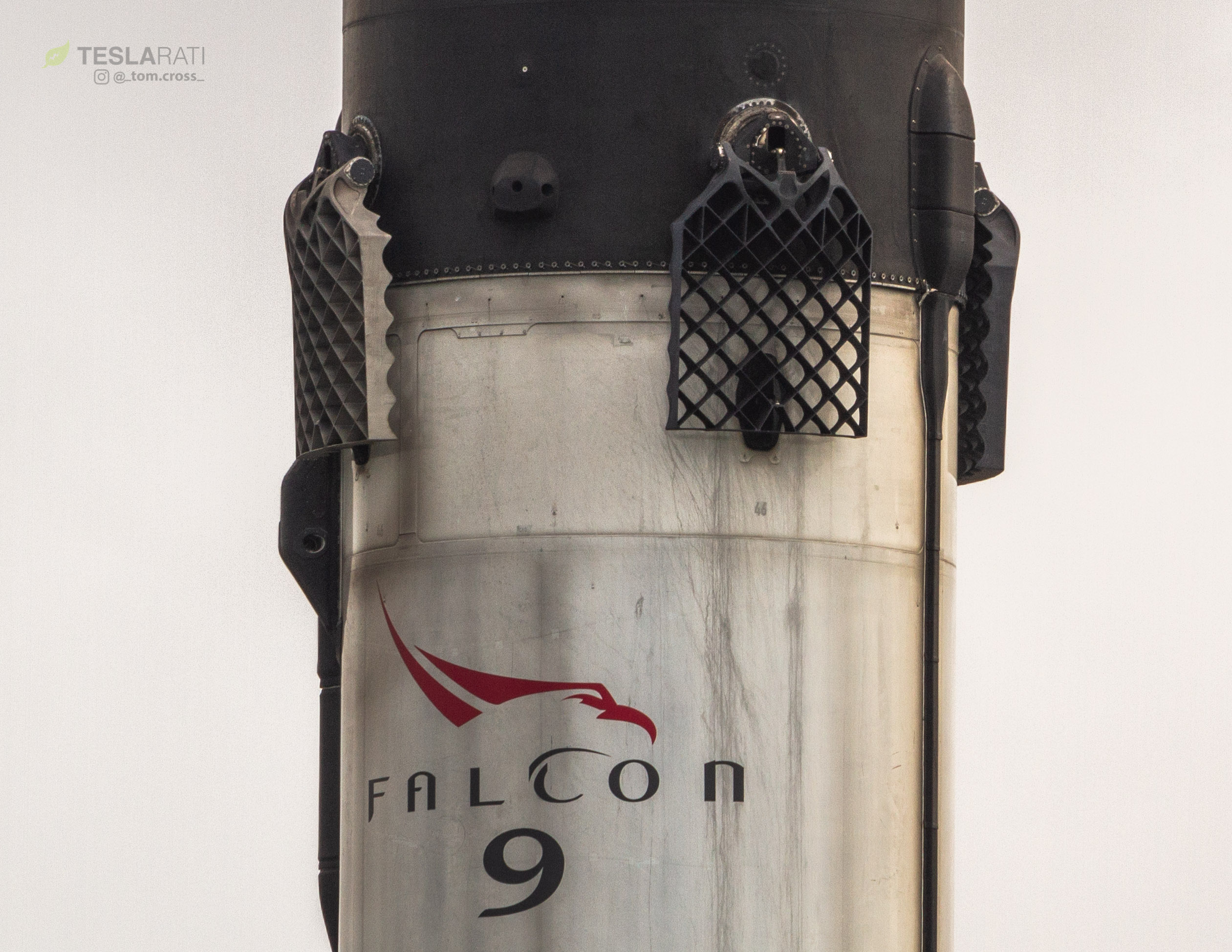
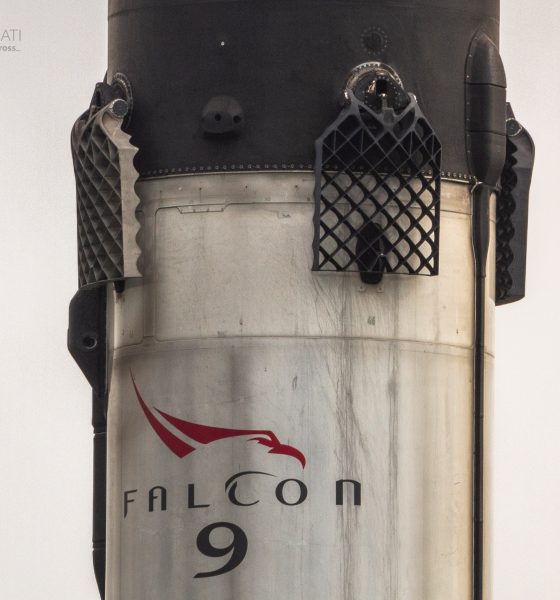
News
SpaceX targets back-to-back Falcon 9 Block 5 launch and landing in July
As the end of June fast approaches, SpaceX’s July launch manifest has begun to coalesce around at least one pair of launches on July 18 and 20, a schedule that might see the company’s next two new Block 5 Falcon 9 boosters fly from West and East coasts with just 30 hours between them.
While not exactly the 24-hour reuse CEO Elon Musk set the company to by end of 2019, two back-to-back launches of new Block 5 boosters would seem to signify an increasing level of operational confidence in the rocket’s new, upgraded configuration, as well as a return to form in factory production of the complex Falcon 9 boosters, only four of which have shipped in the last seven months.

The first Block 5 Falcon 9 lifts off on May 4, 2018. Cheaper launches as a result of reusable rockets may not necessarily increase demand for satellite launches. (Tom Cross)
As it stands today, SpaceX’s West Coast customer Iridium confirmed on June 15th that the company’s 7th contracted Falcon 9 launch is scheduled for early morning on July 20, and Iridium CEO Matt Desch noted that such an early launch just before sunrise holds the potential to create another scare like that from Iridium-4 in December 2017 that had Los Angeles suspecting an alien invasion.
Now that you have the date and time, you should note that it's about 10 minutes after "first light", but still an hour before sunrise at VAFB. Not sure if it will work out or not, but there is potential for another nice "show" like we had in December for L-4.. #LetsScareLAAgain https://t.co/BIyKrwhrof
— Matt Desch (@IridiumBoss) June 15, 2018
It has yet to be explicitly confirmed, but the booster set to launch that mission from Vandenberg Air Force Base all but has to be B1048, SpaceX’s third full Falcon 9 Block 5 rocket. Barring delays, B1047 – the second Block 5 booster, spotted near Cape Canaveral, FL last week – will launch the Telstar 19V geostationary communications satellite a bit more than a day before – July 18th – from SpaceX’s LC-40 pad in Florida. Aside from being the foundational second and third launches of Falcon 9 Block 5, the missions will also feature two drone ship landings in the Pacific and Atlantic Oceans aboard Just Read The Instructions (JRTI) and Of Course I Still Love You (OCISLY).
Putting their titanium grid fins, upgraded heat shields, uprated Merlin engines, and myriad improvements and optimizations to good use, both B1047 and B1048 will – with a little luck – complete their first recoveries of anywhere from ten to a hundred before being secured on the autonomous vessels and carried back to their respective ports within roughly 24 hours of each other. Once there, B1048 (Iridium-7) will likely be shipped a few miles north to SpaceX’s Hawthorne factory, while B1047 will be driven on a purpose-built rocket carrier to one of SpaceX’s several Floridan facilities outfitted for rocket refurbishment.
- B1047 captured testing in McGregor, Texas, April 2018. (Teslarati/Aero Photo)
- What was likely B1049 spotted heading to McGregor, Texas for static fire testing, June 11. (TeslaMotorsClub /u/nwdiver)
- Falcon 9 B1045 prepares for its first flight, the launch of NASA’s TESS exoplanet observatory. (SpaceX)
Time will be of the essence more than ever before for those refurbishments, as the combined fleet of B1047 and B1048 will have to suffice for any additional launches scheduled for late July or early August, the only alternatives being the rapid shipment and testing of B1049 or simply delaying those launches until boosters can be (safely) made available. Block 5’s purpose-built reusability and reliability-focused upgrades will thus be subjected to a near-immediate trial by fire if SpaceX’s engineers and technicians are happy with the first Block 5 rocket’s teardown analysis and the company is up for the challenge.
Up next, fittingly, is the final orbital launch of a (flight-proven) Block 4 version of Falcon 9, itself likely to smash SpaceX’s previous record for time between two flights of the same booster. The mission, CRS-15, will see another flight-proven orbital Cargo Dragon capsule sent to the International Space Station aboard a flight-proven rocket booster, a veritable tip of the hat at SpaceX’s future ambitions with BFR. CRS-15 is scheduled to launch at 5:41am EDT, June 28.
Follow us for live updates, peeks behind the scenes, and photos from Teslarati’s East and West coast photographers.
Teslarati – Instagram – Twitter
Tom Cross – Twitter
Pauline Acalin – Twitter
Eric Ralph – Twitter

Elon Musk
Delaware Supreme Court reinstates Elon Musk’s 2018 Tesla CEO pay package
The unanimous decision criticized the prior total rescission as “improper and inequitable,” arguing that it left Musk uncompensated for six years of transformative leadership at Tesla.

The Delaware Supreme Court has overturned a lower court ruling, reinstating Elon Musk’s 2018 compensation package originally valued at $56 billion but now worth approximately $139 billion due to Tesla’s soaring stock price.
The unanimous decision criticized the prior total rescission as “improper and inequitable,” arguing that it left Musk uncompensated for six years of transformative leadership at Tesla. Musk quickly celebrated the outcome on X, stating that he felt “vindicated.” He also shared his gratitude to TSLA shareholders.
Delaware Supreme Court makes a decision
In a 49-page ruling Friday, the Delaware Supreme Court reversed Chancellor Kathaleen McCormick’s 2024 decision that voided the 2018 package over alleged board conflicts and inadequate shareholder disclosures. The high court acknowledged varying views on liability but agreed rescission was excessive, stating it “leaves Musk uncompensated for his time and efforts over a period of six years.”
The 2018 plan granted Musk options on about 304 million shares upon hitting aggressive milestones, all of which were achieved ahead of time. Shareholders overwhelmingly approved it initially in 2018 and ratified it once again in 2024 after the Delaware lower court struck it down. The case against Musk’s 2018 pay package was filed by plaintiff Richard Tornetta, who held just nine shares when the compensation plan was approved.
A hard-fought victory
As noted in a Reuters report, Tesla’s win avoids a potential $26 billion earnings hit from replacing the award at current prices. Tesla, now Texas-incorporated, had hedged with interim plans, including a November 2025 shareholder-approved package potentially worth $878 billion tied to Robotaxi and Optimus goals and other extremely aggressive operational milestones.
The saga surrounding Elon Musk’s 2018 pay package ultimately damaged Delaware’s corporate appeal, prompting a number of high-profile firms, such as Dropbox, Roblox, Trade Desk, and Coinbase, to follow Tesla’s exodus out of the state. What added more fuel to the issue was the fact that Tornetta’s legal team, following the lower court’s 2024 decision, demanded a fee request of more than $5.1 billion worth of TSLA stock, which was equal to an hourly rate of over $200,000.
Delaware Supreme Court Elon Musk 2018 Pay Package by Simon Alvarez
News
Tesla Cybercab tests are going on overdrive with production-ready units
Tesla is ramping its real-world tests of the Cybercab, with multiple sightings of the vehicle being reported across social media this week.

Tesla is ramping its real-world tests of the Cybercab, with multiple sightings of the autonomous two-seater being reported across social media this week. Based on videos of the vehicle that have been shared online, it appears that Cybercab tests are underway across multiple states.
Recent Cybercab sightings
Reports of Cybercab tests have ramped this week, with a vehicle that looked like a production-ready prototype being spotted at Apple’s Visitor Center in California. The vehicle in this sighting was interesting as it was equipped with a steering wheel. The vehicle also featured some changes to the design of its brake lights.
The Cybercab was also filmed testing at the Fremont factory’s test track, which also seemed to involve a vehicle that looked production-ready. This also seemed to be the case for a Cybercab that was spotted in Austin, Texas, which happened to be undergoing real-world tests. Overall, these sightings suggest that Cybercab testing is fully underway, and the vehicle is really moving towards production.
Production design all but finalized?
Recently, a near-production-ready Cybercab was showcased at Tesla’s Santana Row showroom in San Jose. The vehicle was equipped with frameless windows, dual windshield wipers, powered butterfly door struts, an extended front splitter, an updated lightbar, new wheel covers, and a license plate bracket. Interior updates include redesigned dash/door panels, refined seats with center cupholders, updated carpet, and what appeared to be improved legroom.
There seems to be a pretty good chance that the Cybercab’s design has been all but finalized, at least considering Elon Musk’s comments at the 2025 Annual Shareholder Meeting. During the event, Musk confirmed that the vehicle will enter production around April 2026, and its production targets will be quite ambitious.
News
Tesla gets a win in Sweden as union withdraws potentially “illegal” blockade
As per recent reports, the Vision union’s planned anti-Tesla action might have been illegal.

Swedish union Vision has withdrawn its sympathy blockade against Tesla’s planned service center and showroom in Kalmar. As per recent reports, the Vision union’s planned anti-Tesla action might have been illegal.
Vision’s decision to pull the blockade
Vision announced the blockade in early December, stating that it was targeting the administrative handling of Tesla’s facility permits in Kalmar municipality. The sympathy measure was expected to start Monday, but was formally withdrawn via documents sent to the Mediation Institute and Kalmar Municipality last week.
As noted in a Daggers Arbete report, plans for the strike were ultimately pulled after employer group SKR highlighted potential illegality under the Public Employment Act. Vision stressed its continued backing for the Swedish labor model, though Deputy negotiation manager Oskar Pettersson explained that the Vision union and IF Metall made the decision to cancel the planned strike together.
“We will not continue to challenge the regulations,” Petterson said. “The objection was of a technical nature. We made the assessment together with IF Metall that we were not in a position to challenge the legal assessment of whether we could take this particular action against Tesla. Therefore, we chose to revoke the notice itself.”
The SKR’s warning
Petterson also stated that SKR’s technical objection to the Vision union’s planned anti-Tesla strike framed the protest as an unauthorized act. “It was a legal assessment of the situation. Both for us and for IF Metall, it is important to be clear that we stand for the Swedish model. But we should not continue to challenge the regulations and risk getting judgments that lead nowhere in the application of the regulations,” he said.
Vision ultimately canceled its planned blockade against Tesla on December 9. With Vision’s withdrawal, few obstacles remain for Tesla’s long-planned Kalmar site. A foreign electrical firm completed work this fall, and Tesla’s Careers page currently lists a full-time service manager position based there, signaling an imminent opening.
